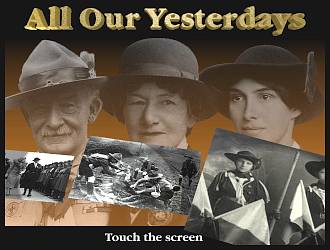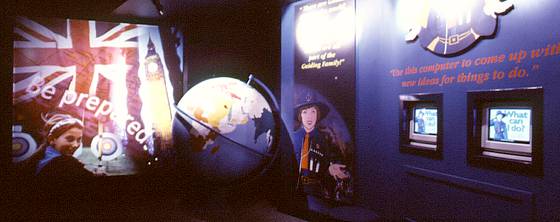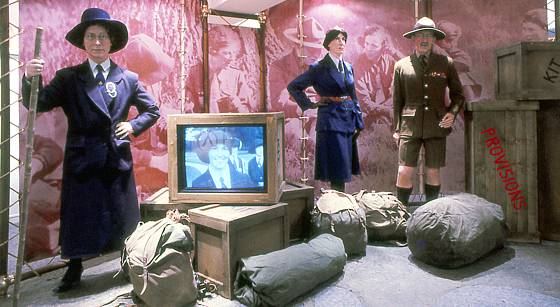![]()
Although it is open to the public, the majority of visitors to the centre are groups of Guides and Brownies. The centre was designed to reflect the self reliance and hands-on approach that Guides are known for, but had to be accessible to visitors of all ages, from Rainbows to Seniors and to the general public.

The exhibition starts with a section on the history of the Guiding movement. Here there is a video programme made from material from the Guides archive, a set showing a camp in the 1930s (where Guides themselves acted the parts) and an extensive interactive touch-screen programme.
The rest of the exhibition is very much based on the visitor doing things, and on what Guiding means today. There are many hands-on exhibits, including two more touch-screen programmes, one in a cartoon quiz form that takes Brownies through what they might expect to find on their first camp and the other that is designed to answer the question "What Can I Do?"

In order to involve Guides from all over the world in the exhibition, a call went out to send in photographs of their latest activities. These were turned into a suite of five multi-image slide programmes, and at a more local level, a group of Cheshire Guides made a video diary of their activities during the summer of 1995.
Roy Reed produced most of the audio visual elements and many of the special effects. He was a member of the project design team.
